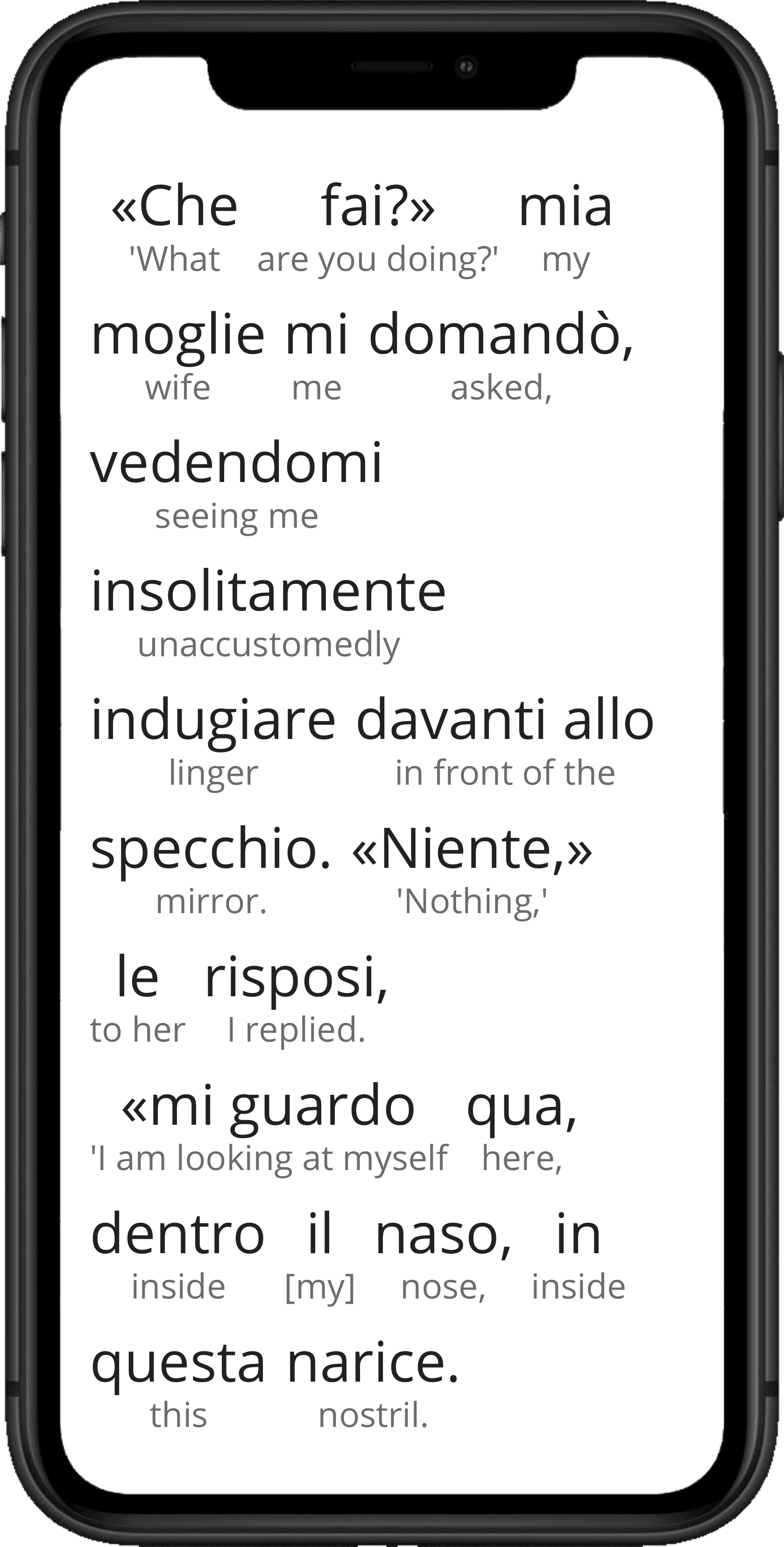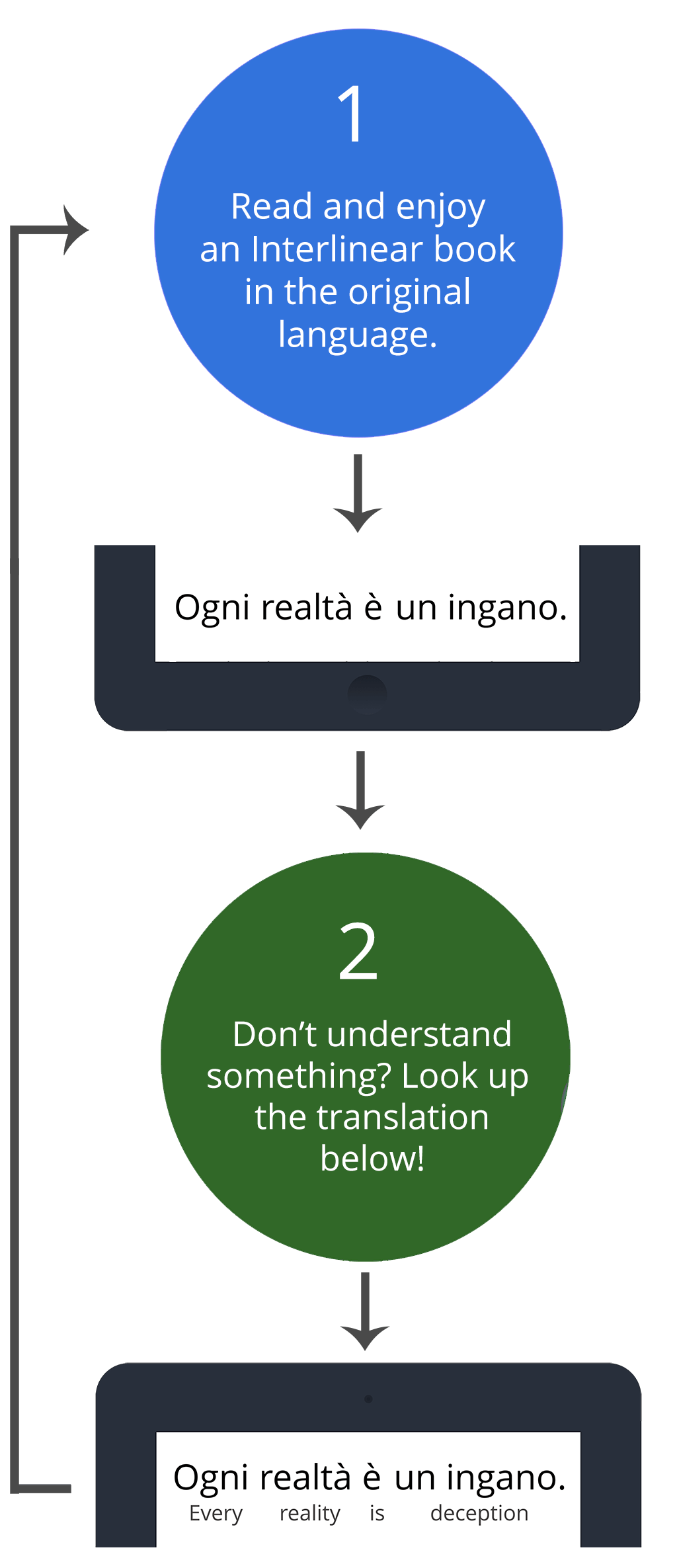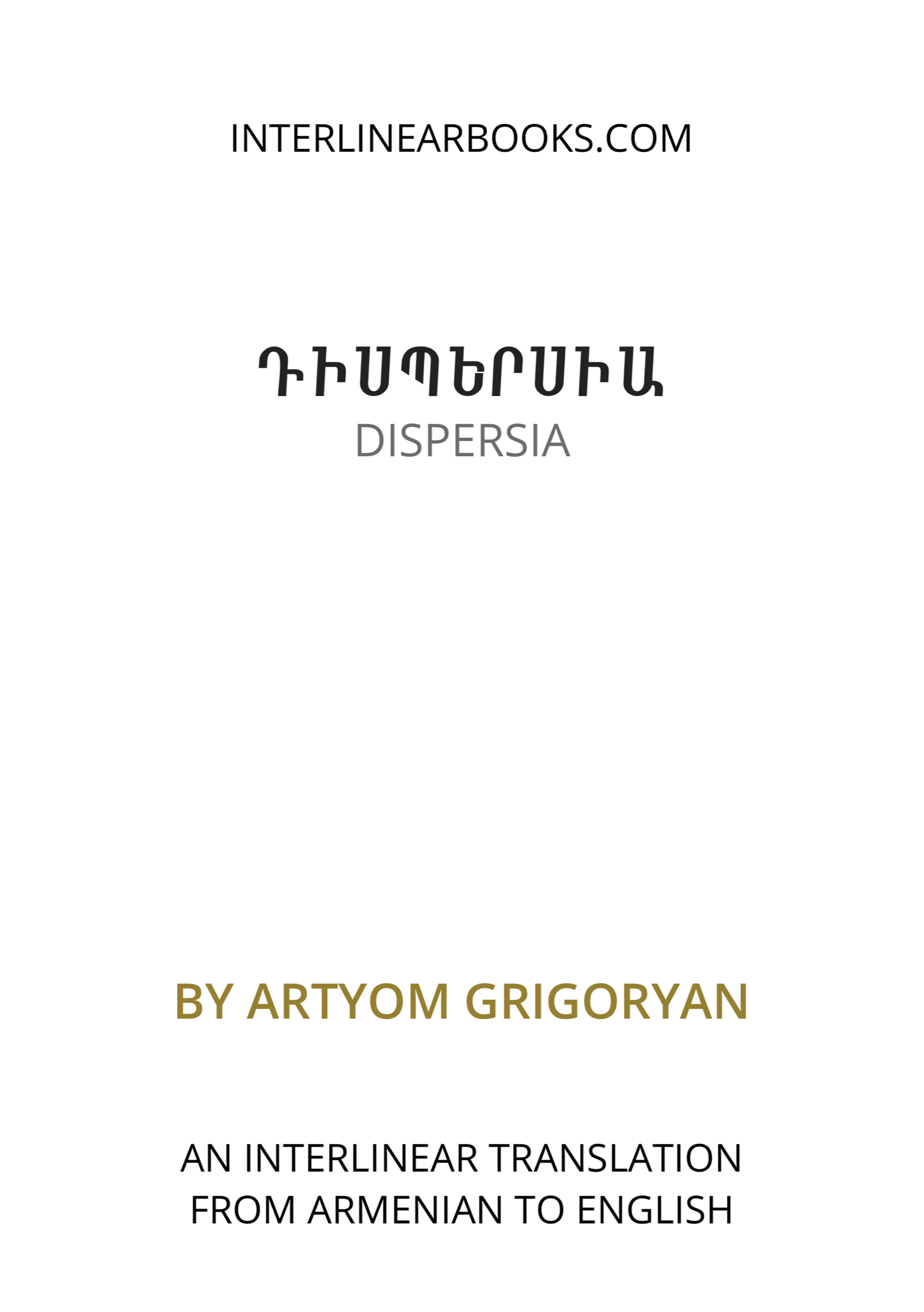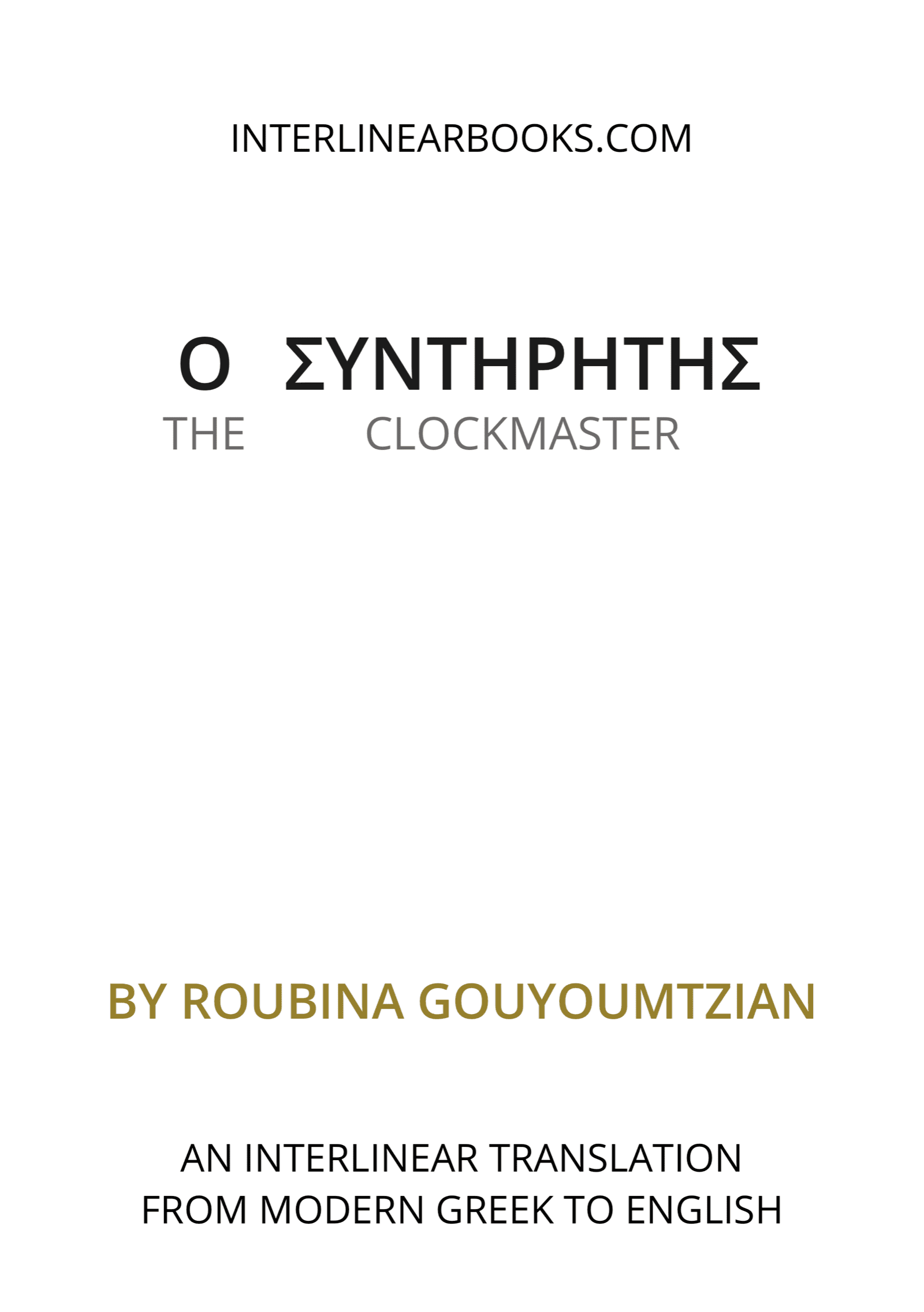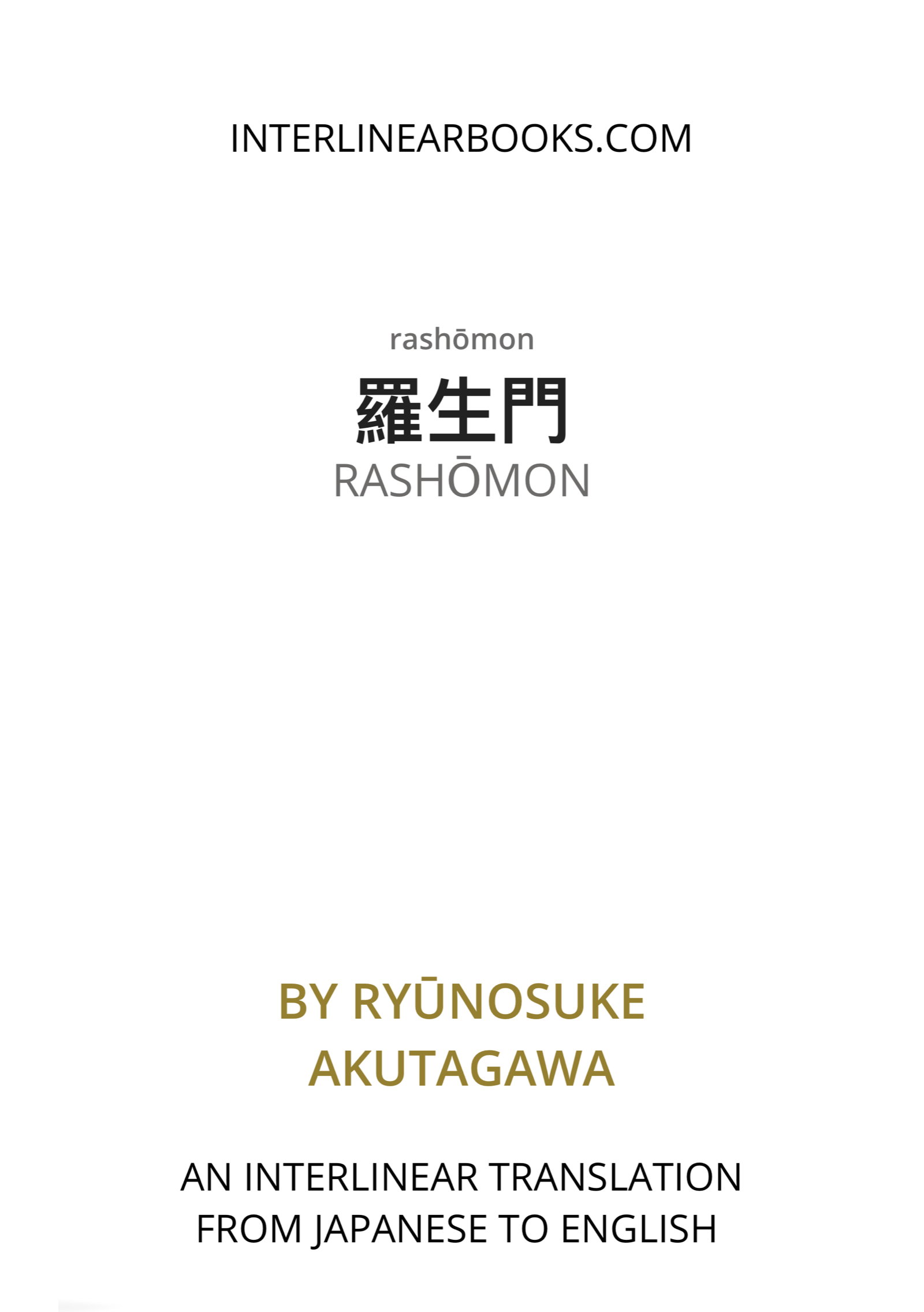- over 300 standard-book pages
- nearly 40 thousand translated words and expressions
- original Italian text & aligned Interlinear translations
- a separately available Italian-only version of the text to get additional practice after having read the text with the Interlinear translation
- files in the printable or electronically readable PDF format, as well as MOBI and EPUB format files for Kindles and other e-book readers, tablets, and phones - all immediately available to download
Read One, No One and One Hundred Thousand by Luigi Pirandello in Italian
In Interlinear, the Italian text is followed by an English translation below each word or phrase.

